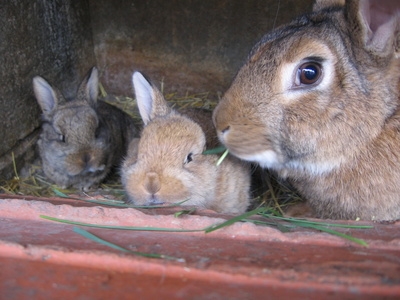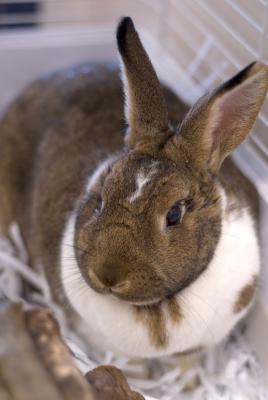
Our lovable rabbit companions are subject to a wide range of diseases and maladies, just like all creatures. Smart rabbit owners keep themselves well informed about the various types of illnesses that could at one point affect their rabbits. This article reviews some of the traits of rabbit hemorrhagic disease (also known as rabbit calicivirus) - a serious disease that affects rabbits around the world.
Rabbit hemorrhagic disease was first recorded in China during the 1980's. Since then, it has killed millions of rabbits all over the world. After testing it for population control purposes, it was accidentally released in Australia during the 1990's. This resulted in the deaths of about 10 million rabbits in 8 weeks. It has been used in several other countries as a method of controlling rabbit populations.
The disease primarily affects the European rabbit; the North American cottontail and jackrabbits are resistant to the disease. Once infected with this viral contagion, a rabbit will exhibit various symptoms. These symptoms include fever, listlessness, loss of appetite, and occasionally the appearance of bloody, foamy discharge from the nasal passages. Some rabbits can die in as little as 6 to 24 hours after being infected. The mortality rate for this disease has been estimated at 50-100%.
The virus is spread mainly through rabbit to rabbit contact. It can also be spread via contact with fur, flies, rodents, or any other animals that have been in contact with the virus, including humans.
During an outbreak, there are several strategies for preventing rabbit hemorrhagic disease from spreading to your bunny. First, quarantine any new bunnies you have brought home or bunnies returning from rabbit shows for six weeks. Disinfect any cages or rabbit supplies that may have come in contact with the contagion. Also, be careful if you have been in any place where your clothing may have come in contact with the virus, like at pet stores or animal shelters. Also, be aware that your cat or dog can carry and spread the disease to your rabbit.
It is vital that we keep ourselves well informed about the many different diseases that can affect our rabbit companions. The more we know, the more likely we are to catch and prevent a disease-related tragedy from occurring.
 Rabbit Hair Loss Around Eyes and On Ears Causes
Season
Rabbit Hair Loss Around Eyes and On Ears Causes
Season
 How to Make Urine Guards for Rabbit Cages
How to Make Urine Guards for Rabbit Cages
How to Make Urine Guards for Rabbit Cages
How to Make Urine Guards for Rabbit Cages
 Pet Rabbits For Sale – What Questions To Ask Breeders?
When l
Pet Rabbits For Sale – What Questions To Ask Breeders?
When l
 How to Build an Outside Rabbit Hutch
How to Build an Outside Rabbit Hutch
H
How to Build an Outside Rabbit Hutch
How to Build an Outside Rabbit Hutch
H
 What to Put in a Rabbit Cage
What to Put in a Rabbit Cage
What to P
What to Put in a Rabbit Cage
What to Put in a Rabbit Cage
What to P
Copyright © 2005-2016 Pet Information All Rights Reserved
Contact us: www162date@outlook.com